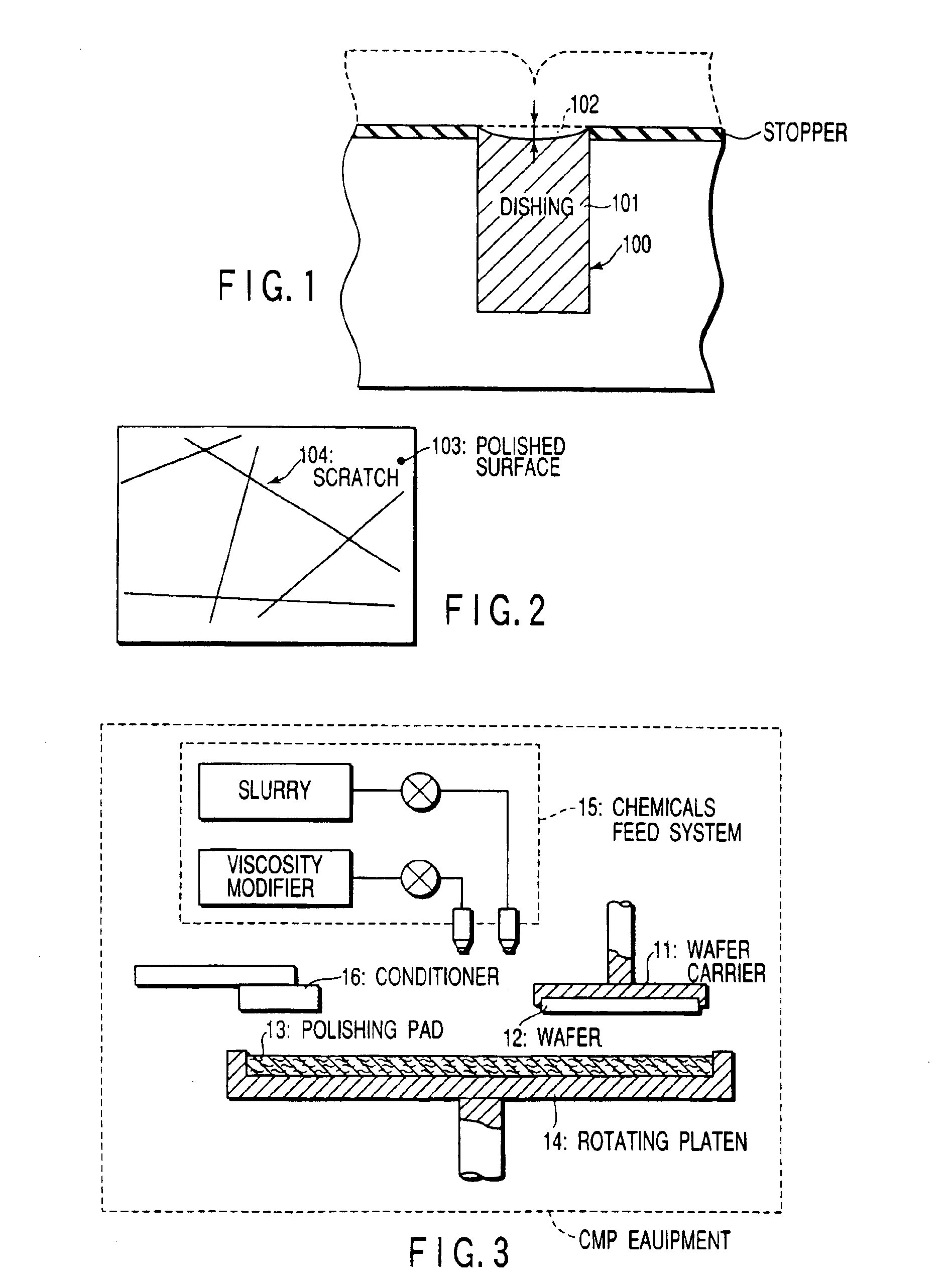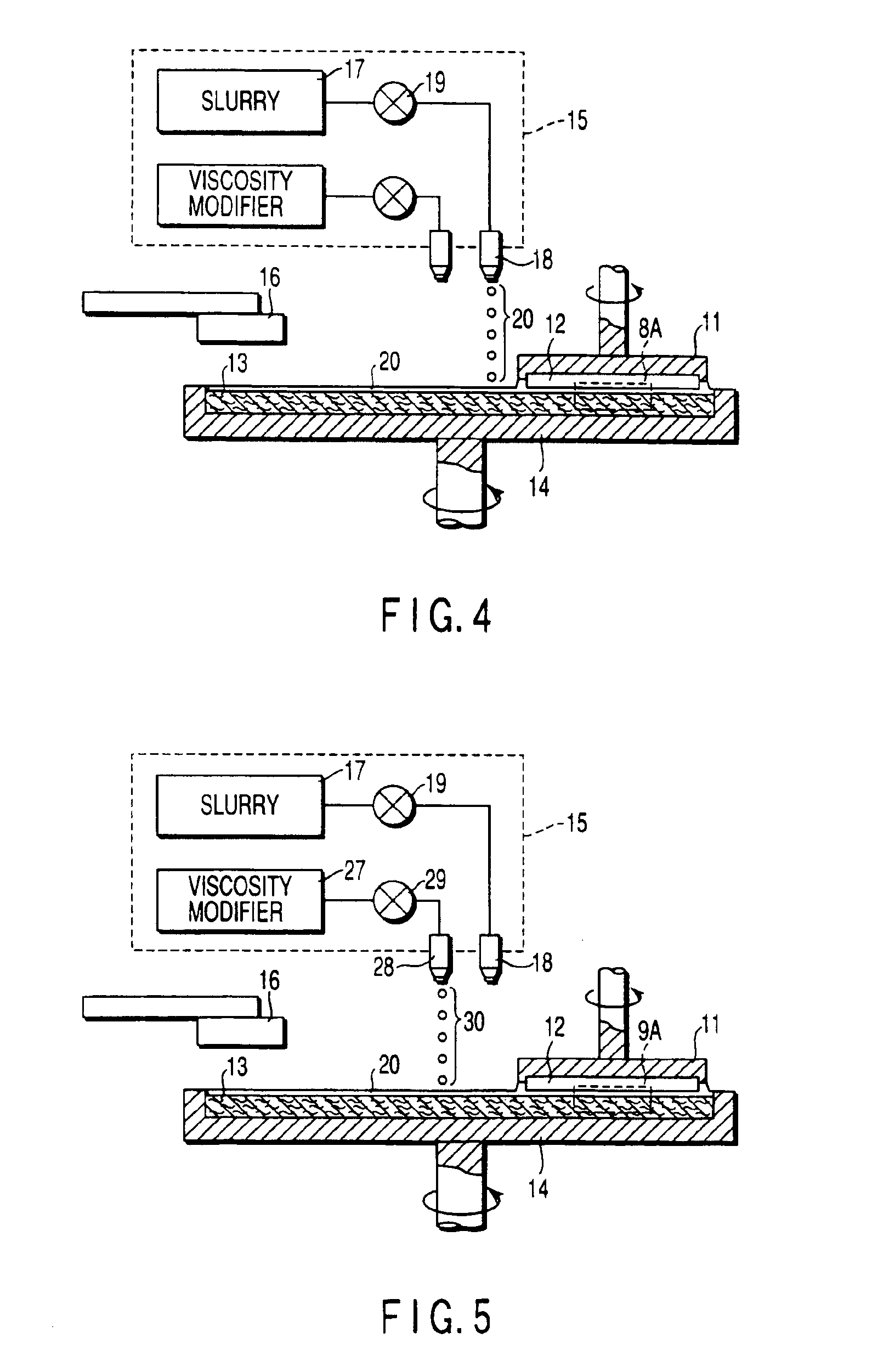Method of chemical/mechanical polishing of the surface of semiconductor device
a technology of chemical/mechanical polishing and semiconductor devices, applied in the direction of polishing compositions, lapping machines, manufacturing tools, etc., can solve the problem of difficult deformation of polishing pads, and achieve the effect of keeping scratches from increasing
- Summary
- Abstract
- Description
- Claims
- Application Information
AI Technical Summary
Benefits of technology
Problems solved by technology
Method used
Image
Examples
Embodiment Construction
An embodiment of the present invention will be described hereinafter with reference to the accompanying drawings, wherein like reference characters designate like parts throughout all the views.
First, reference is made to FIG. 3 to describe CMP equipment used in the CMP process according to an embodiment of the present invention.
As shown in FIG. 3, a wafer carrier 11 holds a wafer 12. The wafer 12 is held by the carrier 11 so that its to-be-polished surface is opposed to a polishing pad 13. The polishing pad 13 is mounted on a rotating platen 14. In this embodiment, the polishing pad 13 may be a conventionally used one. For example, the polishing pad 13 is preferably formed of a foam material consisting of, say, polyurethane, non-woven fabric consisting of, say, polyester fiber, or a stacked structure of these materials.
Above the rotating platen 14 is provided a chemicals feed system 15 which feeds the polishing pad 13 with chemicals. In this embodiment, the chemicals comprise a slu...
PUM
| Property | Measurement | Unit |
|---|---|---|
| Surface activity | aaaaa | aaaaa |
Abstract
Description
Claims
Application Information
 Login to View More
Login to View More - R&D
- Intellectual Property
- Life Sciences
- Materials
- Tech Scout
- Unparalleled Data Quality
- Higher Quality Content
- 60% Fewer Hallucinations
Browse by: Latest US Patents, China's latest patents, Technical Efficacy Thesaurus, Application Domain, Technology Topic, Popular Technical Reports.
© 2025 PatSnap. All rights reserved.Legal|Privacy policy|Modern Slavery Act Transparency Statement|Sitemap|About US| Contact US: help@patsnap.com



